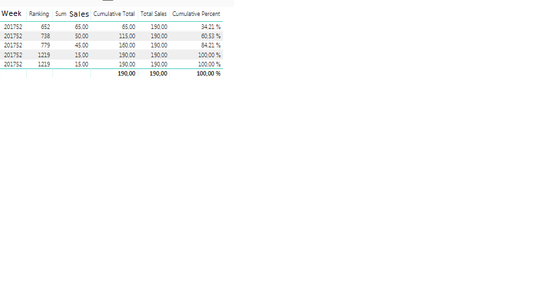- Power BI forums
- Updates
- News & Announcements
- Get Help with Power BI
- Desktop
- Service
- Report Server
- Power Query
- Mobile Apps
- Developer
- DAX Commands and Tips
- Custom Visuals Development Discussion
- Health and Life Sciences
- Power BI Spanish forums
- Translated Spanish Desktop
- Power Platform Integration - Better Together!
- Power Platform Integrations (Read-only)
- Power Platform and Dynamics 365 Integrations (Read-only)
- Training and Consulting
- Instructor Led Training
- Dashboard in a Day for Women, by Women
- Galleries
- Community Connections & How-To Videos
- COVID-19 Data Stories Gallery
- Themes Gallery
- Data Stories Gallery
- R Script Showcase
- Webinars and Video Gallery
- Quick Measures Gallery
- 2021 MSBizAppsSummit Gallery
- 2020 MSBizAppsSummit Gallery
- 2019 MSBizAppsSummit Gallery
- Events
- Ideas
- Custom Visuals Ideas
- Issues
- Issues
- Events
- Upcoming Events
- Community Blog
- Power BI Community Blog
- Custom Visuals Community Blog
- Community Support
- Community Accounts & Registration
- Using the Community
- Community Feedback
Register now to learn Fabric in free live sessions led by the best Microsoft experts. From Apr 16 to May 9, in English and Spanish.
- Power BI forums
- Forums
- Get Help with Power BI
- Desktop
- Ranking calculation in a table
- Subscribe to RSS Feed
- Mark Topic as New
- Mark Topic as Read
- Float this Topic for Current User
- Bookmark
- Subscribe
- Printer Friendly Page
- Mark as New
- Bookmark
- Subscribe
- Mute
- Subscribe to RSS Feed
- Permalink
- Report Inappropriate Content
Ranking calculation in a table
Good morning,
I have a problem with a calculation. I want to do a PARETO Chart. I used the tutorial at this address : https://powerbi.tips/2016/10/pareto-charting/
But when I do it, it doesn't work beacause some of my Sum Sales are equal and the measures don't work. I let you see on this picture :
As you can see, the last calculations are wrong because the ranking is the same for the two last lines. I give you the formula I used :
Ranking = RANKX( 'Summary', 'Summary'[Sum Sales])
Cumulative Total = CALCULATE( SUM( Summary[Sum Sales] ), FILTER( ALLSELECTED( Summary ), Summary[Ranking] <= MAX( Summary[Ranking] ) ))
Total Sales = CALCULATE( SUM( Summary[Sum Sales] ) , ALLSELECTED( Summary ) )
Cumulative Percent = [Cumulative Total] / [Total Sales]
Do you have any idea do correct my calculations please ?
Thank you for your help.
Solved! Go to Solution.
- Mark as New
- Bookmark
- Subscribe
- Mute
- Subscribe to RSS Feed
- Permalink
- Report Inappropriate Content
Create an additional column that is different from the similar Sales Column
SupportCol = Data[Sales]+(RANDBETWEEN(1,100)/10000000)
This will add decimal value to the similar numbers hence making it non similar.
Then do the ranking based on this SupportCol
RANKX(TableName,[SupportCol],,DESC)
- Mark as New
- Bookmark
- Subscribe
- Mute
- Subscribe to RSS Feed
- Permalink
- Report Inappropriate Content
Calculations seems fine just do one thing,
In the table properties, choose Don't Summarize for Weeks & Ranking.
It's grouping them hence similar figures.
- Mark as New
- Bookmark
- Subscribe
- Mute
- Subscribe to RSS Feed
- Permalink
- Report Inappropriate Content
All the fields are already not summarize and that gives me this result.
- Mark as New
- Bookmark
- Subscribe
- Mute
- Subscribe to RSS Feed
- Permalink
- Report Inappropriate Content
The problem is the ranking, it is giving same Ranks for two similar figures.
I have tried to find it out but couldn't succed in getting a good solution for Ranking of same figures.
- Mark as New
- Bookmark
- Subscribe
- Mute
- Subscribe to RSS Feed
- Permalink
- Report Inappropriate Content
Create an additional column that is different from the similar Sales Column
SupportCol = Data[Sales]+(RANDBETWEEN(1,100)/10000000)
This will add decimal value to the similar numbers hence making it non similar.
Then do the ranking based on this SupportCol
RANKX(TableName,[SupportCol],,DESC)
- Mark as New
- Bookmark
- Subscribe
- Mute
- Subscribe to RSS Feed
- Permalink
- Report Inappropriate Content
It works! Thank you SO MUCH!!
- Mark as New
- Bookmark
- Subscribe
- Mute
- Subscribe to RSS Feed
- Permalink
- Report Inappropriate Content
Thank you it looks working. 🙂
Helpful resources

Microsoft Fabric Learn Together
Covering the world! 9:00-10:30 AM Sydney, 4:00-5:30 PM CET (Paris/Berlin), 7:00-8:30 PM Mexico City

Power BI Monthly Update - April 2024
Check out the April 2024 Power BI update to learn about new features.

| User | Count |
|---|---|
| 117 | |
| 107 | |
| 70 | |
| 70 | |
| 43 |
| User | Count |
|---|---|
| 148 | |
| 106 | |
| 104 | |
| 89 | |
| 65 |

